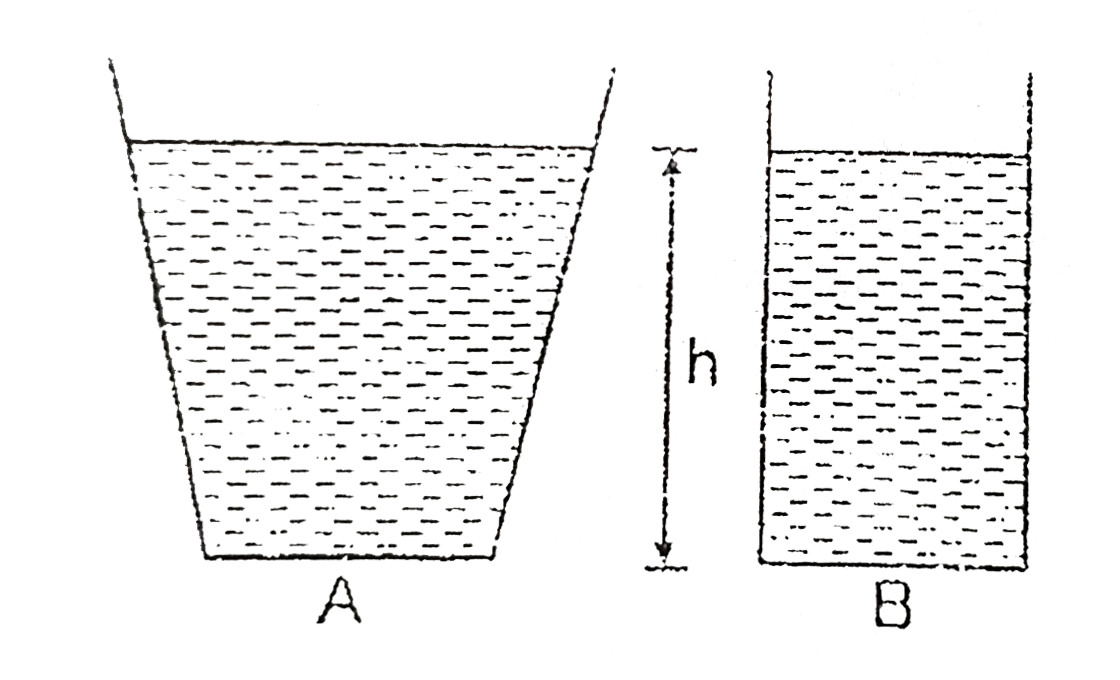Two vessels have the same base area but different shapes. The first vessel takes twice the volume of water that the second vessel requires to fill upto a particular common height. Is the force exerted by the water on the base of the vessel the same in the two cases? If so, why do the vessels filled with water to that same height give different readings on a weighing scale?Solution in Assamese
Step by step video & image solution for Two vessels have the same base area but different shapes. The first vessel takes twice the volume of water that the second vessel requires to fill upto a particular common height. Is the force exerted by the water on the base of the vessel the same in the two cases? If so, why do the vessels filled with water to that same height give different readings on a weighing scale? by Physics experts to help you in doubts & scoring excellent marks in Class 11 exams.
Updated on:21/07/2023Similar Questions
Two vessels have the same area but different shapes. The first shapes takes twice the volume of water that the second vessel requires to fill up to a particular common height? Is the force exerted by the water on the base of the vessel the same in the two cases? If so, why do the vessels filled with water to that same height give different readings on a weighing scale?
View SolutionTwo vessels have the same base area but different shapes . The first vessel takes twice the volume of water that the second vessel requires to fill upto a particular common height . Is the force exerted by the two water on the base of the vessel the same in the two cases ? If so , why do the vessels filled with water to that same height give different readings on a weighing scale ?
View SolutionTwo vessels A and B have same base area. Equal volumes of a liquid are poured in the two vessel to different heights hA and hB(hB>hA). In which vessel, the force on the base of vessel will be more?
View SolutionTwo vessels A and B of different shapes have the same base area and are filled with water up to the same height h (see figure). The force exerted by water on the base is F_(A) for vessel A and F_(B) for vessel B . The respective weights of the water filled in vessels are W_(A) and W_(B) . Then
View Solutionएक बेलनाकार बर्तन पूरी तरह पानी से भरा है । इस पानी को पूरी तरह खाली करने के लिए उसी आधार व उसी ऊँचाई वाले कितने शंक्वाकार बर्तनों की आवश्यकता होगी?
View SolutionTwo vessels have the same base area but different shapes. The first vessel takes twice the volume of water that the second vessel requires to fill upto a particular comon height. Is the force exerted by the water on the base of the vessel the same in the two cases ? If so, why do the vessels filled with water to that same height given different readings on a weighing scale ?
View SolutionTwo vessels have the same base area but different shapes. The first vessel takes twice the volume of water that the second vessel requires to fill upto a particular common height. Is the force exerted by the water on the base of the vessel the same in the two cases ? If so, why do the vessels filled with water to thatsame height give different readings on a weighing scale ?
View SolutionTwo vessels A and B of different shapes have the same base area and are filled with water up to the same height h (see figure). The force exerted by water on the base is FA for vessel A and FB for vessel B. The respective weights of the water filled in vessels are WA and WB. Then

View Solution
